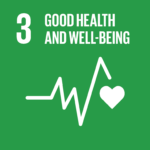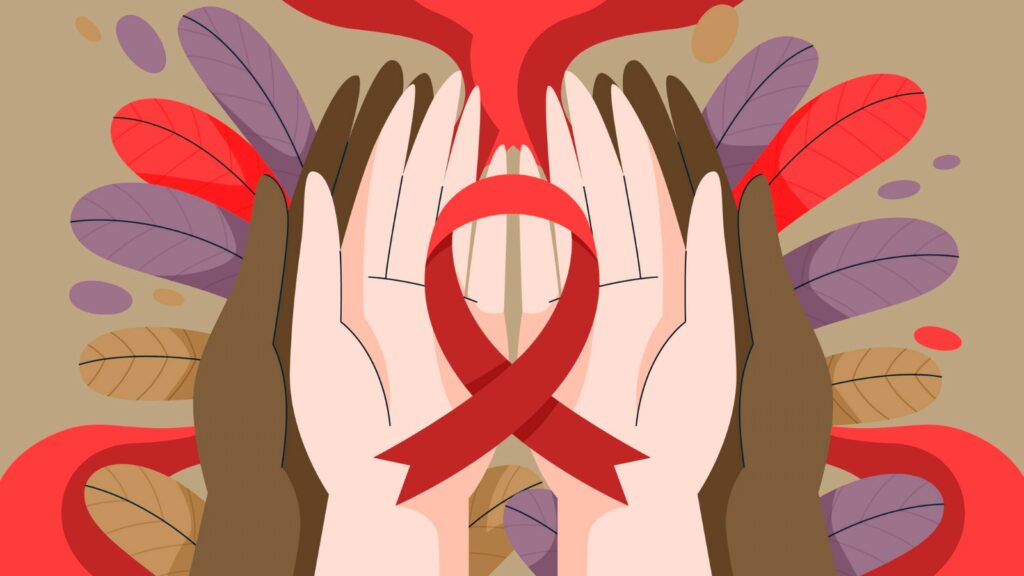AIDS remains a pandemic. We can end AIDS by 2030, but it’ll take us to be courageous and work together.
It’s World AIDS Day today. This day, first observed in 1988, provides an opportunity for advocates to raise awareness and knowledge about the global epidemic, support those living with HIV/AIDS, and remember those who have died as a result of the disease.
RELEVANT SUSTAINABLE GOALS


Forty years since the first AIDS cases were reported, HIV still threatens the world. Today, the world is off track from delivering on the shared commitment to end AIDS by 2030 not because of a lack of knowledge or tools to beat AIDS, but because of structural inequalities that obstruct proven solutions to HIV prevention and treatment.
AIDS will not be solved on time if inequalities are not defeated as a matter of urgency. Although there is a perception that a time of crisis is not the right time to prioritize tackling the underlying social injustices, it is clear that without doing so the crisis cannot be overcome. Fighting inequality is a promise that’s been made for ages, but which has become more urgent in recent years. Here are some of the measures that need to be taken in order to minimise the income inequalities:
Based latest report by UNAIDS, there are five critical elements from the Global AIDS Strategy that must urgently be universalised, and which are also critical but under-funded and under-prioritised for pandemic prevention, preparedness and response. Here are some of the measures that need to be taken in order to minimise the income inequalities:
1. Community-Led and People-entered Infrastructure
From COVID-19 to Ebola and beyond, the community-led and community-based infrastructure has proved similarly important. It is not a replacement for the state, but rather an effective means of broadening the scope and depth of interventions and making pandemic responses more inclusive, equitable, and long-term. Despite this, community-led infrastructure is rarely included in pandemic preparedness essentials.
In dozens of countries, communities and networks of key populations have been working closely with their communities to provide essential supplies, information, HIV testing and treatment services.
2. Equitable access to medicines, vaccines and health technologies
It took decades for HIV tests and medications to become widely available and easily affordable for all who need them. Millions of lives were lost in the process. The vaccine inequalities of today’s COVID-19 pandemic echo the early AIDS response’s treatment inequalities.
3. Human Rights, to build trust and tackle pandemics
Violations of human rights undermine trust and drive people away from public health measures. This remains a barrier to ending AIDS in many places, and a lack of respect for human rights undermines COVID-19 measures. On the other hand, evidence and experience show that advocating for human rights improves public health. The critical elements of rights-based pandemic responses are limiting the use of criminal law to enforce public health measures, identifying rights violations where they occur, effective judicial and human rights institutions, and independent civil society groups capable of holding governments accountable build public trust.
4. Elevating essential workers, and providing them with the resources and tools they need
Front-line workers are the unsung heroes of pandemic response, putting their health and safety at risk to provide care and keep essential goods and services available. Over the decades, international and domestic AIDS response resources have been used to hire and train millions of health workers, allowing the expansion of HIV prevention, testing, and treatment services. However, these healthcare professionals and communities of people living with HIV and key populations do far more than HIV work, particularly at the community and primary care levels. They are now playing a critical role in the fight against COVID-19. Elevating essential workers and providing them with the resources and tools they need is critical to keeping them on the job.
5. People-Centered Data Systems That highlight Inequalities
Over the last two years, people all over the world have been captivated by the nearly real-time tracking of SARS-CoV-2 infections, COVID-19 deaths, and vaccine coverage by multiple public health websites and major news providers. The speed with which COVID-19 data is collected, aggregated, and shared is remarkable. The details, on the other hand, are frequently missing from these data: who is most vulnerable to COVID-19’s effects, who is reached, who is not reached, and why.
Closing data gaps for critical populations is critical to providing them with the services they require; in a way that protects their privacy and the confidentiality of their data. In addition, the use of health data for other purposes, such as law enforcement, undermines trust in services and data systems, violates patients’ rights, and reduces the likelihood of comprehensive, accurate data collection.
Every minute that passes, we are losing a precious life to AIDS. We don’t have time.
End inequalities. End AIDS. End Pandemic.
Read the UNAIDS report here.


